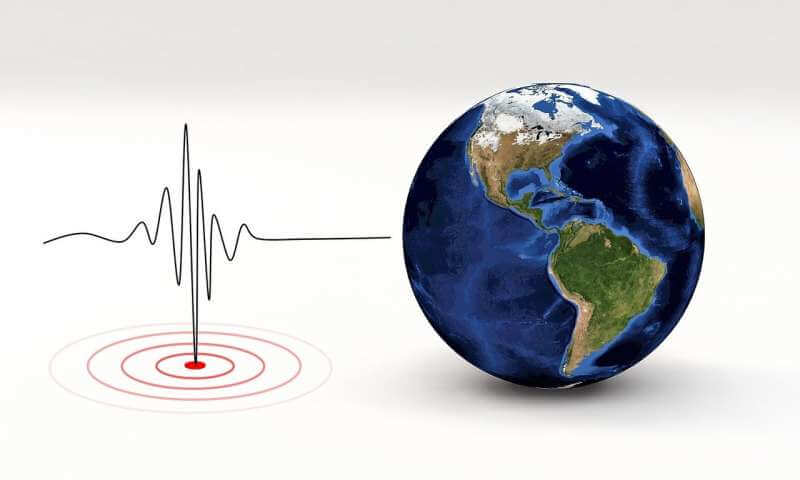Covid-19 and the Environment: What’s real and will it last?
The global pandemic caused by a new coronavirus has changed daily life for many people around the world. Restrictions in travel and commerce have forced people to stay home, businesses to close, and travel to cease. But what about non-human life and human perception of it? Turns out the human response to Covid-19 has had a measurable effect on the environment and presents novel opportunities for research. But what about reporting that is not research backed? And will affects such as reduced pollution last? Here is a brief overview of recent updates.
Decrease in Vibration in the Earth’s Crust
There is a global network of seismometers that measure vibrations in earth’s surface. Traffic, machinery and other human activity all create vibrations which, when combined, can be significant in seismometer measurements. These anthropogenic vibrations influence how easily detectable other phenomena are including earthquakes and volcanic eruptions. Following the massive shutdowns and travel restrictions across the globe in response to the Covid-19 pandemic, anthropogenic vibrations have decreased, especially in places with higher population densities.
Thomas Leroq, a geologist at the Royal Observatory of Belgium, shared that Brussels has quieted down 30-50%, a reduction generally only observed for a few days of the year around Christmas. This extended decrease in the baseline level of noise could allow for better monitoring and measuring of earth’s surface activity. Following a Tweet Leroq made about the relative quiet in Brussels, other seismologists around the world have been connected. They are actively sharing data and exploring the possibilities of what can be seismologically researched in this quiter world of the Covid-19 pandemic. [i]
Reduction in Air Pollution
NASA Earth Observatory published tropospheric monitoring results from the Sentinel-5 satellite which show significant declines in atmospheric nitrogen dioxide (NO2) over China. This drop has been attributed to the slowing down of human activity due to the coronavirus. Also in China, the use of coal at coal-powered power plants declined to the lowest level in four years causing notable decreases in air pollution.
This reduction in atmospheric pollution is not confined to China. In fact, Jenny Stavrakou, an atmospheric scientist at the Royal Belgian Institute for Space Aeronomy in Brussels, alongside her colleagues, estimated the change in nitrogen dioxide pollution in major cities using satellite measurements of air quality. While the highest decline was measured in China, with an average decrease of 40% in major cities, nitrogen dioxide pollution decreased by 20 to 38% over Western Europe and the United States when compared with this same time of year in 2019.
In Los Angeles, one of the most densely populated United States’ cities with notorious traffic and poor air quality, commuter traffic is reported to have decreased by 80% since the lockdown went into effect. The Environmental Protection Agency reported that Los Angeles has recently had the longest stretch of “good” air quality rating it has since 1995.[ii]
A Cleaner Ganges
The Ganges river is worshipped by many Indians who pray, bathe and cremate their dead in it. The BBC reported that an estimated 10% of industrial effluent is discharged into Ganges river. Following the Indian government’s mandated shut down to curb the spread of the coronavirus, the river is reportedly visibly clearer and even considered drinkable in some areas.[iii]
Fake News
Maybe you’ve read about the swans and dolphins returning to the now-clean Venetian canals? Fake news. Or the elephants, unbounded in the absence of humans, getting drunk on corn wine in a Chinese village and passing out in the tea garden? Adorable, but also not true.
It is understood that in stressful times, people seek and perpetuate social media posts that are emotionally evocative, wanting to feel for themselves and to share with others joyful, happy content. Remarkably, this behavior on social media has been found to correspond with the spread of infectious diseases, according to research reported on by National Geographic. Think about that: As the pandemic spreads across the globe, so too do viral social media posts, truthful or not.[iv]
Will it Last?
Back in the realm of credible news updates, one major environmental question being asked is whether the declines in pollution and other responses from the Covid-19 pandemic will last. Regarding fossil fuel consumption and greenhouse gasses, some researchers speculate that once the restrictions are lifted, people and industries will work overtime to make up for their lost time. For example, will people who have been self-isolating come out of quarantine and book commercial flights to make up for the trips they missed? Many agree that whether environmental responses to Covid-19 will last or turn out statistically relevant will depend on how long the pandemic lasts. And as with so many other things right now, that remains uncertain.[v]
[i] https://www.nature.com/articles/d41586-020-00965-x
https://earthobservatory.nasa.gov/blogs/earthmatters/2020/03/05/how-the-coronavirus-is-and-is-not-affecting-the-environment/
[ii] https://globalnews.ca/news/6793100/los-angeles-air-quality-coronavirus/
[iii] (https://www.bbc.com/news/av/world-asia-india-52290522/india-coronavirus-lockdown-cleans-up-ganges-river)
[iv] https://www.nationalgeographic.com/animals/2020/03/coronavirus-pandemic-fake-animal-viral-social-media-posts/
[v] https://www.bbc.com/future/article/20200326-covid-19-the-impact-of-coronavirus-on-the-environment










gooooooooooooooooood